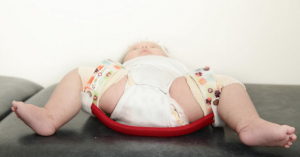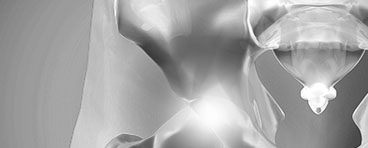Click on the links below to find out more
DDH-Developmental Dislocation (Dysplasia)/Congenital Hip Dislocation
TREATMENT
When DDH is detected at birth, it can usually be corrected with the use of a harness or brace. If the hip is not dislocated at birth, the condition may not be noticed until the child begins walking. At this time, treatment is more complicated, with less predictable results
non-surgical treatment
Treatment methods depend on a child’s age.
Newborns. The baby is placed in a soft positioning brace to keep the thighbone in the socket. This special brace is designed to hold the hip in the proper position while allowing free movement of the legs and easy nappy changes. The brace helps tighten the ligaments around the hip joint and promotes normal hip socket formation.
Parents play an essential role in ensuring the harness is effective. Mr Slattery will teach you how to safely perform daily care tasks, such as nappy changes, bathing, feeding, and dressing.

An infant in a “Rhino” brace to treat DDH.

Dennis-Brown Hip Abduction Brace (Courtesy OrthoKids)
1 month to 6 months
Similar to newborn treatment, a baby’s thighbone is repositioned in the socket using a device called a Dennis Browne Abduction Brace. This method is usually successful, even with hips that are initially dislocated. How long the baby will require the brace varies. It is usually worn full-time for at least 6 weeks, and then part-time for an additional 6 weeks.
If the hip will not stay in position using a Dennis Brown brace, Dr Slattery may need to put the hip back into place and then apply a cast (Closed Reduction). Mr Slattery will gently move your baby’s thighbone into proper position, and then apply a body cast (spica cast) to hold the bones in place. This procedure is done while the baby is under anesthesia.
If the hip is completely dislocated and will not go back into joint with the use of a brace, then an open reduction may be required. This typically involves an incision in the groin crease, and then surgically bringing the hip back into the socket. A spica cast is then applied for a period and bracing after cast removal.
6 months to 2 years
Older babies are also treated with closed reduction and spica casting. In some cases, skin traction is used for a few weeks prior to repositioning the thighbone. Skin traction puts a gentle force on the skin, and stretches the soft tissues around the hip for the change in bone positioning. It may be done at home or in the hospital.
Surgical Treatment
6 months to 2 years
If a closed reduction procedure is not successful in putting the thighbone is proper position, open surgery is necessary. In this procedure, an incision is made at the baby’s hip that allows the surgeon to clearly see the bones and soft tissues. Afterwards, the child is placed in a spica cast to maintain the proper hip position.
Older than 2 years
In some children, the looseness worsens as the child grows and becomes more active. Open surgery is typically necessary to realign the hip. A spica cast is usually applied to maintain the hip in the socket.
Recovery
In many children with DDH, a body cast and/or brace is required to keep the hip bone in the joint during healing. The cast may be needed for 2 to 3 months. Mr Slattery may change the cast during this time period.
X-rays and other regular follow-up monitoring are needed after DDH treatment until the child’s growth is complete.
Complications
Children treated with spica casting may have a delay in walking. However, when the cast is removed, walking development proceeds normally.
The brace and other positioning devices may cause skin irritation around the straps, and a difference in leg length may remain. Growth disturbances of the upper thighbone are rare, but may occur due to a disturbance in the blood supply to the growth area in the thighbone.
Even after proper treatment, a shallow hip socket may still persist, and surgery may be necessary in early childhood to restore the normal anatomy of the hip joint.
Outcomes
If diagnosed early and treated successfully, children are able to develop a normal hip joint and should have no limitation in function. Left untreated, DDH can lead to pain and osteoarthritis by early adulthood. It can lead to pain, limping, differences in leg length, and restricted activity.
Even with appropriate treatment, hip deformity and osteoarthritis may develop later in life. This is especially true when treatment begins after the age of 2 years.

Dr David Slattery
FRACS MBBS (Hons) LLB FAOrthA
Dr David Slattery is an orthopaedic surgeon based in Melbourne with over 10 years of experience, with a special focus on hip and knee joint preservation and replacement. With qualifications in both medicine and law, he brings a unique and comprehensive approach to patient care. His surgical techniques are minimally invasive and evidence-based, designed to reduce pain and enhance recovery.
Trained in leading institutions across Europe and the USA, Dr Slattery offers advanced treatments for a wide range of joint conditions. He is deeply committed to patient outcomes and takes pride in tailoring treatment plans to each individual. Whether you’re an athlete or seeking relief from chronic joint pain, his goal is to restore function and improve your quality of life.







